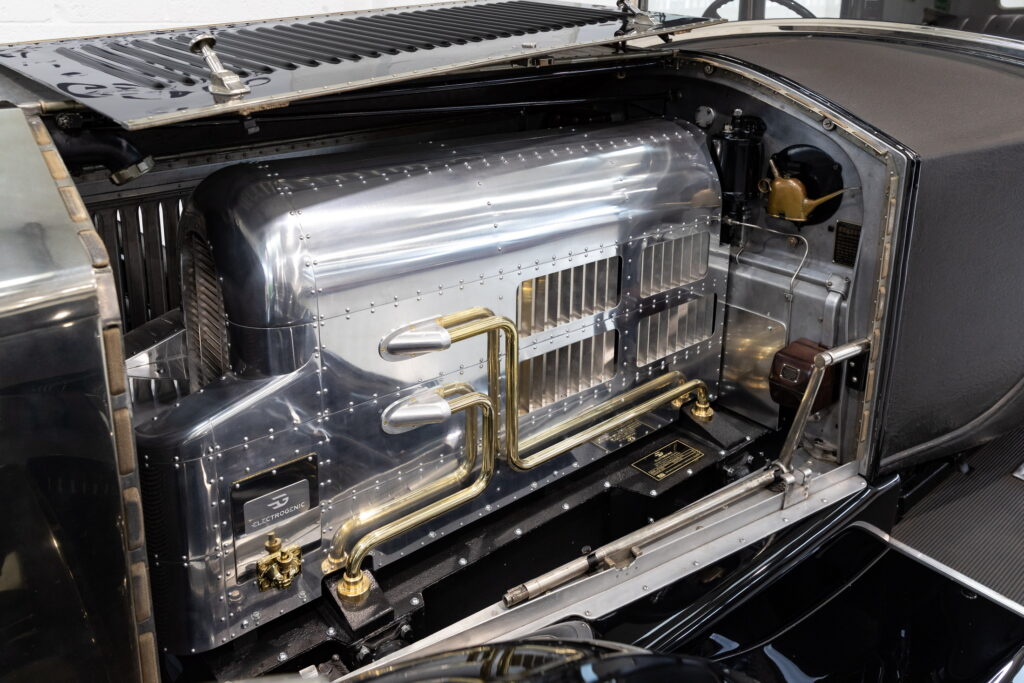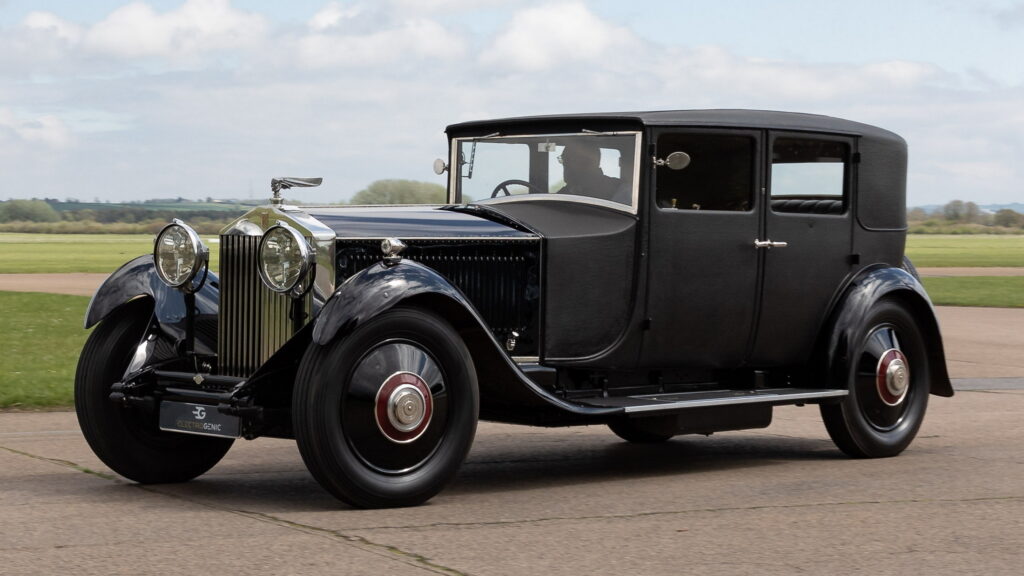Electromodded vehicles promise clean and efficient power, but they also risk sanding off all of the interesting peculiarities from classic vehicles. Electrogenic is trying really hard to avoid letting that happen, and its latest project highlights how.
The company has unveiled its latest commission, a 1929 Rolls-Royce Phantom II. One of just 1,681 ever built, it features coachwork by HJ Mulliner & Co., and came with a massive 7.7-liter straight-six engine.
That has now been removed from the car, but not thrown out, since this is a fully reversible electric conversion. In its place, 93 kWh battery has been placed. And I mean that literally, the team took 3D scans of the car and used CAD design tools to find the best, least intrusive place to put the batteries, which happened to be where the massive engine formerly sat.
The battery sends power to a 201 hp (150 kW/204 PS) electric motor, which generates roughly four times more power than the original, 50 hp (37 kW/51 PS) engine. Despite the body having an appalling coefficient of drag of around one, the car can still go an estimated 150 miles (241 km) per charge.
Read: Mini Converts Classic Model Into An EV Without Adding Any Weight

To say that it simply swapped the engine with some batteries and hid a motor in the back is to do Electrogenic a disservice, though. Steve Drummond, the company’s director, calls this its “most complex classic car conversion” it has done to date.
To start, you can’t just quadruple the power of a classic and leave it with cable operated brakes. So the company had to subtly add a pedal, and install a hydraulic system between it and the cable actuators. In addition, it hooked the braking system up to the motor’s regen system, to help improve efficiency.
The team also wanted to maintain the Phantom II’s centralized through-flow chassis lubrication system. Crucial to Rolls-Royce’s trademark silken drive, it originally passed through the engine, too. That meant rerouting the system, and once again supplementing it in such a way that it could also be reversed if the owner wanted to take the car back to original spec.
In addition, the fuel gauge has been replaced by an LED equivalent that measures state of charge, and the oil temperature gauge shows the temperature of the electric motor. In addition, the Rolls-Royce now has a state-of-the-art sound system.
On top of being careful not to cut or weld anything in order to create a fully reversible conversion, it was also important for Electrogenic to maintain some of the car’s original character. The owner may not have to double declutch anymore, but the drive has been carefully tuned not to be too modern.
“This really has been a fascinating project to work on, and one that we’ve poured our hearts and souls into,” said Drummond. “We’re delighted with the results; it combines the most stunning 1920s coach building with an updated driving experience that’s entirely befitting of a Rolls-Royce.”
The Electrogenic Rolls-Royce Phantom II will make its public debut at Salon Privé at Blenheim Palace, in the U.K., which runs from August 30 to September 2.

















